Padparadscha sapphire: Properties, Uses and Virtues
Enter the enchanting realm of Padparadscha Sapphire, an enchanting gemstone that blends the ethereal beauty of pink and orange hues.
As a rare variety of sapphire, the Padparadscha sapphire captivates hearts with its seductive colours and mystical appeal.
Join us as we explore the geological origins of the Padparadscha sapphire, its global presence, historical significance and metaphysical properties, as we unlock the secrets of this extraordinary stone.
Padparadscha: Table of contents
- Padparadscha Geological Formation
- Rough Padparadscha – Raw Beauty Revealed
- Sources – The Worldwide Reach of Padparadscha
- Historical Significance of the Padparadscha – Through the Ages
- Metaphysical Properties of Padparadscha – Illuminating energies
- Padparadscha varieties
- Padparadscha colors
- Durability and Wearability of Padparadscha
- Padparadscha Improvements – Preserving Natural Beauty
- Synthetic Padparadscha – Nature in the Laboratory
- Imitations of Padparadscha – Discerning the Authentic
- Padparadscha Maintenance – Preserving natural beauty
Padparadscha Geological Formation
Padparadscha sapphire, a captivating variety of corundum, owes its existence to complex geological forces deep within the earth’s crust. The fusion of pink and orange hues in Padparadscha sapphire results from the presence of trace elements, such as chromium and iron, during its formation.
This extraordinary stone is often found in alluvial deposits and metamorphic rocks, bearing witness to the Earth’s creative genius.
Rough Padparadscha – Raw Beauty Revealed
Frequently found in different forms, the crystals of this stone generally have a common barrel shape or a prismatic structure with flat terminations. Sometimes, they can have a bipyramidal configuration.
This mineral can also be found in massive and granular formations, as well as in the form of rolled pebbles.
The immaculate beauty of raw corundum crystals sets the stage for the exceptional brilliance and clarity for which sapphires and rubies are renowned.
Sources – The Worldwide Reach of Padparadscha
Most Padparadscha sapphires are found in Sri Lanka, but orange-pink sapphires have also been found in Madagascar, Vietnam and Tanzania. Each location gives the gem its unique characteristics, offering a delightful range of colours and qualities that make Padparadscha Sapphire a sought-after gemstone on the world stage.
Historical Significance of the Padparadscha – Through the Ages
Steeped in history and symbolism, Padparadscha sapphires have left an indelible mark on civilisations down the ages. The name “Padparadscha” comes from the Sinhalese word “padma radschen”, meaning the delicate petals of the lotus flower.
Embracing the qualities of purity and spiritual awakening, the Padparadscha sapphire has adorned the regalias of royalty and remains a prized gemstone in the world of fine jewellery.
As well as its historical importance to the aristocracy, the Padparadscha sapphire has also been a popular choice for engagement rings and romantic jewellery. The gem’s delicate blend of pink and orange colours is associated with love, passion and commitment, making it a meaningful symbol of eternal affection.
Despite its widespread popularity, genuine Padparadscha sapphires remain exceptionally rare and their value continues to rise as demand outstrips supply.
Metaphysical Properties of Padparadscha – Illuminating energies
In the realm of metaphysical beliefs, Padparadscha Sapphire is revered for its properties of harmony and spiritual connection.
Believed to promote inner peace and a sense of balance, this enchanting gemstone serves as a conduit for spiritual growth and heightened intuition, making it an invaluable companion on the journey of self-discovery.
Padparadscha varieties
Padparadscha sapphires offer an enchanting spectrum of colours, but no variety to speak of.
Padparadscha colors
The appeal of Padparadscha Sapphire lies in the harmonious fusion of pink and orange hues, creating a bewitching display of colour. Radiating warmth and romance, the gem’s enchanting colouring makes it a popular choice for elegant and symbolic pieces of jewellery.
Durability and Wearability of Padparadscha
Padparadscha sapphires, like other varieties of sapphire, have exceptional hardness, reaching 9 on the Mohs scale. This exceptional durability ensures that Padparadscha sapphire jewellery remains resilient and radiant over time, becoming precious heirlooms for future generations.
Padparadscha Improvements – Preserving Natural Beauty
True to their rare and prized status, Padparadscha Sapphires are generally celebrated in their natural state, with minimal enhancements applied to preserve their innate beauty. It is possible to find Padparadscha sapphires that have been lightly heated, oiled or filled with fractures.
Synthetic Padparadscha – Nature in the Laboratory
In the modern world, advances in gemmology have given rise to synthetic Padparadscha sapphires that mimic their natural counterparts. The laboratory gems, created using a variety of methods, aim to reproduce the unique colours and appearance of the Padparadscha sapphire.
Buyers should be cautious when purchasing Padparadscha Sapphires to ensure the authenticity of their gemstones.
Imitations of Padparadscha – Discerning the Authentic
As a highly prized and sought-after gemstone, Padparadscha Sapphire can sometimes be imitated or misrepresented by stones or materials ranging from pink to orange. Beryl, Quartz, Synthetic Spinel, Tourmaline, Garnets and Glass can be used as imitations.
Buyers should exercise caution and contact reputable and certified gem dealers to ensure the authenticity of their Padparadscha gemstone.
Padparadscha Maintenance – Preserving natural beauty
Taking care of Padparadscha sapphire jewellery is essential to preserving its timeless beauty. Gentle cleaning using soapy water and a soft brush is recommended, avoiding exposure to aggressive chemicals and sudden temperature changes.
Proper care ensures that the gemstone’s brilliance and appeal endure, continuing to enchant hearts for generations to come.
Like all sapphires, it is generally safe to use mechanical tools with a natural stone if there are no inclusions or fractures. As always, if in doubt, avoid doing so.
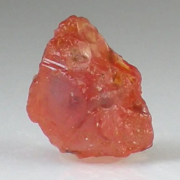
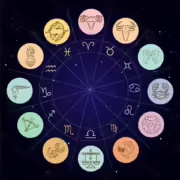
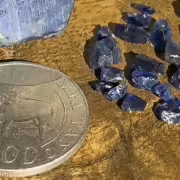
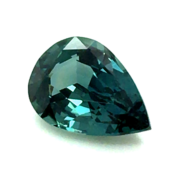
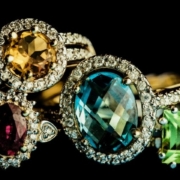


Leave a Reply
Want to join the discussion?Feel free to contribute!